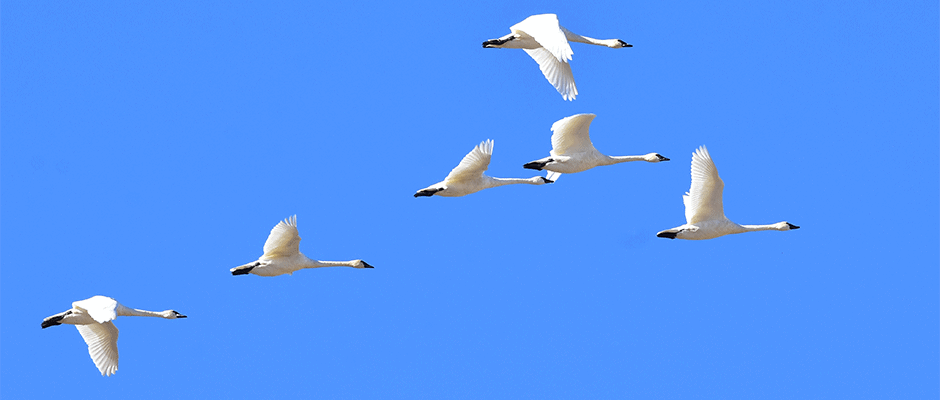Share this article
Weather radar helps predict bird migrations
Weather radar is usually collected by the National Weather Service to help people know what to wear outside or if any big storms are coming, but it can also help predict continental-scale bird migrations.
In a study published in Science, a research team created a model that can automatically turn weather radar data into avian migration predictions.
“Using weather radar to study birds is not a new idea and people have been using radar to study birds since radar was invented around World War II,” said Benjamin Van Doren, the lead author of the study and a PhD student at the University of Oxford. “But what is really new about our study is the scale at which we are applying radar to look at bird migration.”
A bird appears like a “large raindrop” on weather radar, but those appearances usually get filtered out by meteorologists, Van Doren said. When the researchers collected the raw data, they filtered out the precipitation instead to get bird numbers. Using radar data of the atmosphere taken every five to 10 minutes, Van Doren and his colleagues looked at springtime bird migration across the continental United States for about 30 minutes each night corresponding with the peak of nightly bird migration.
They were then able to use just weather forecast data — not raw data — including winds, temperature, cloud cover and humidity as well as location and time of the season to create a model to predict bird migrations. Temperature proved to be one of the biggest predictors of migration, Van Doren said.
“We trained machine learning models and characterized weather conditions and bird observation models that can look at any given weather condition and estimate the number of birds migrating,” he said.
After testing the model, the team was able to explain up to 80 percent of the variations in migration timing. When the model predicted bird migrations seven days in advance, it was 60 percent accurate. One of the most exciting parts of the project was the automation of the process, Van Doren said.
Van Doren said using bird forecasts could have some exciting conservation implications, such as helping manage birds that face anthropogenic threats like colliding with buildings or wind turbines. When people know when to expect birds to migrate, they will know when it’s more beneficial to turn lights out in buildings or turn off wind turbines.
And there’s more to learn about birds using weather radar. “We’re only starting to crack open this archive of data,” Van Doren said.
Header Image: Tundra swans (Cygnus columbianus) migrate at the Seedskadee National Wildlife Refuge. Researchers recently developed an automated system to forecast bird migrations using weather radar. ©Tom Koerner








